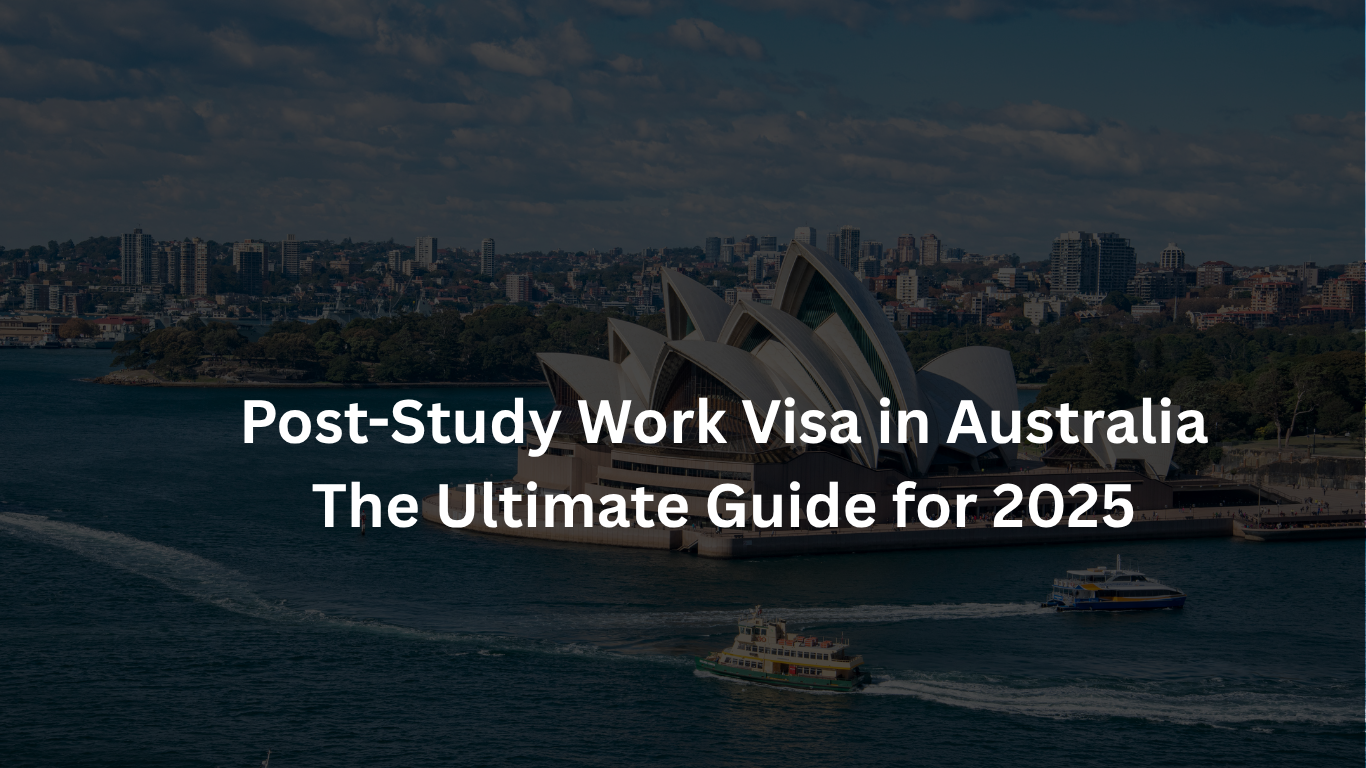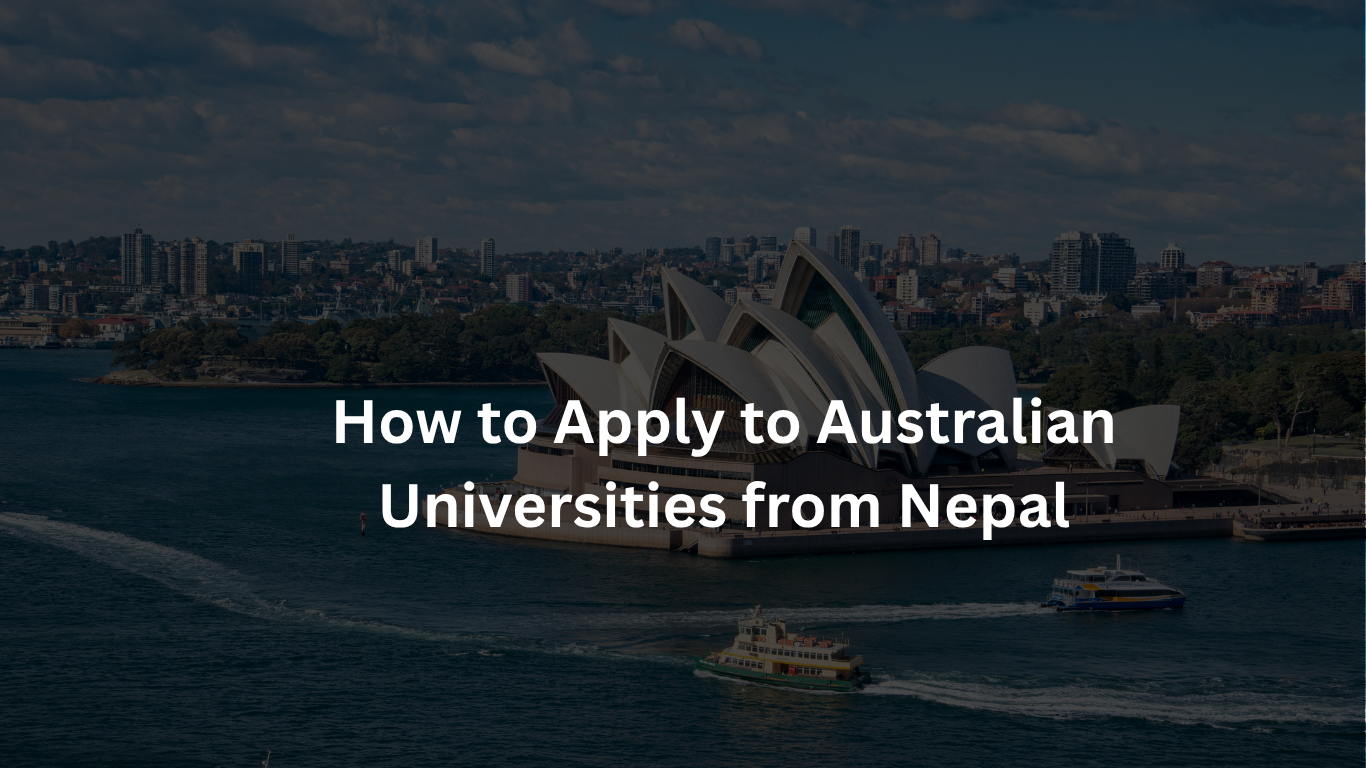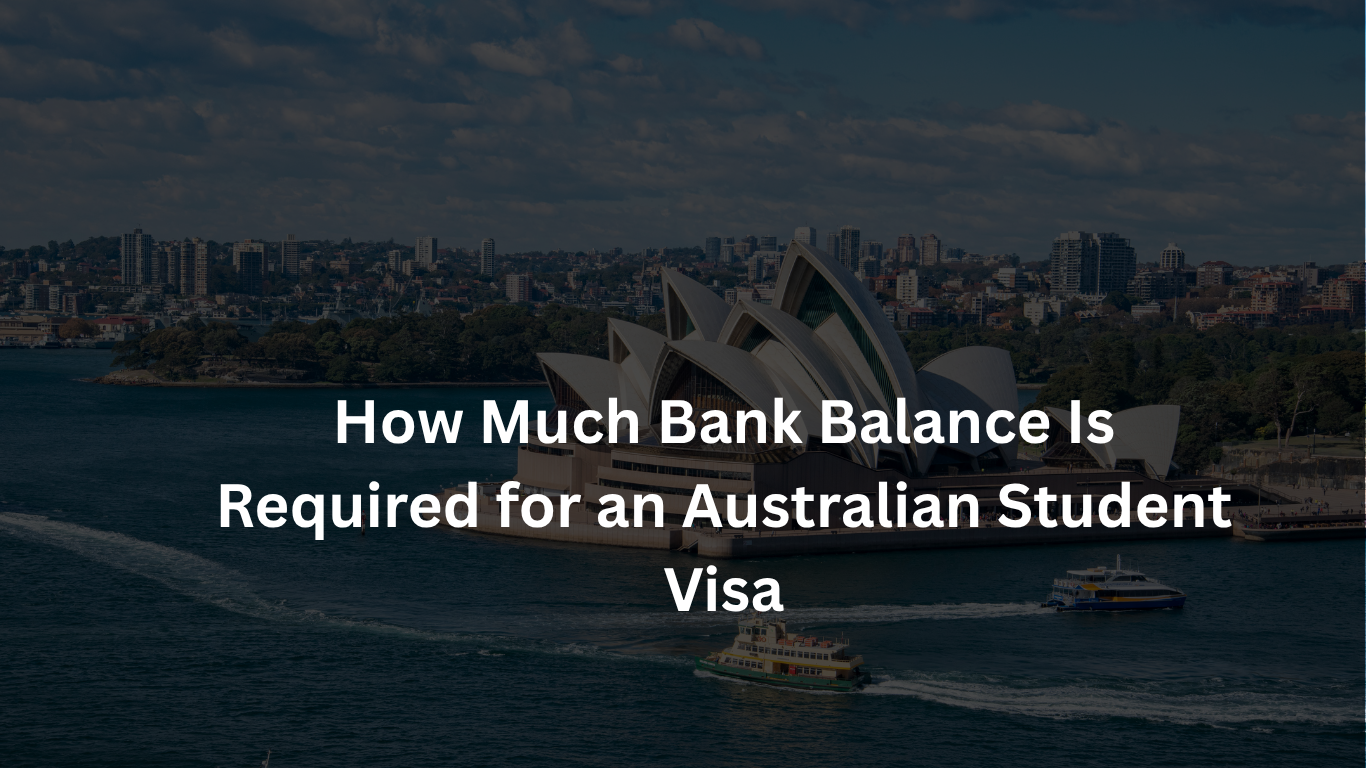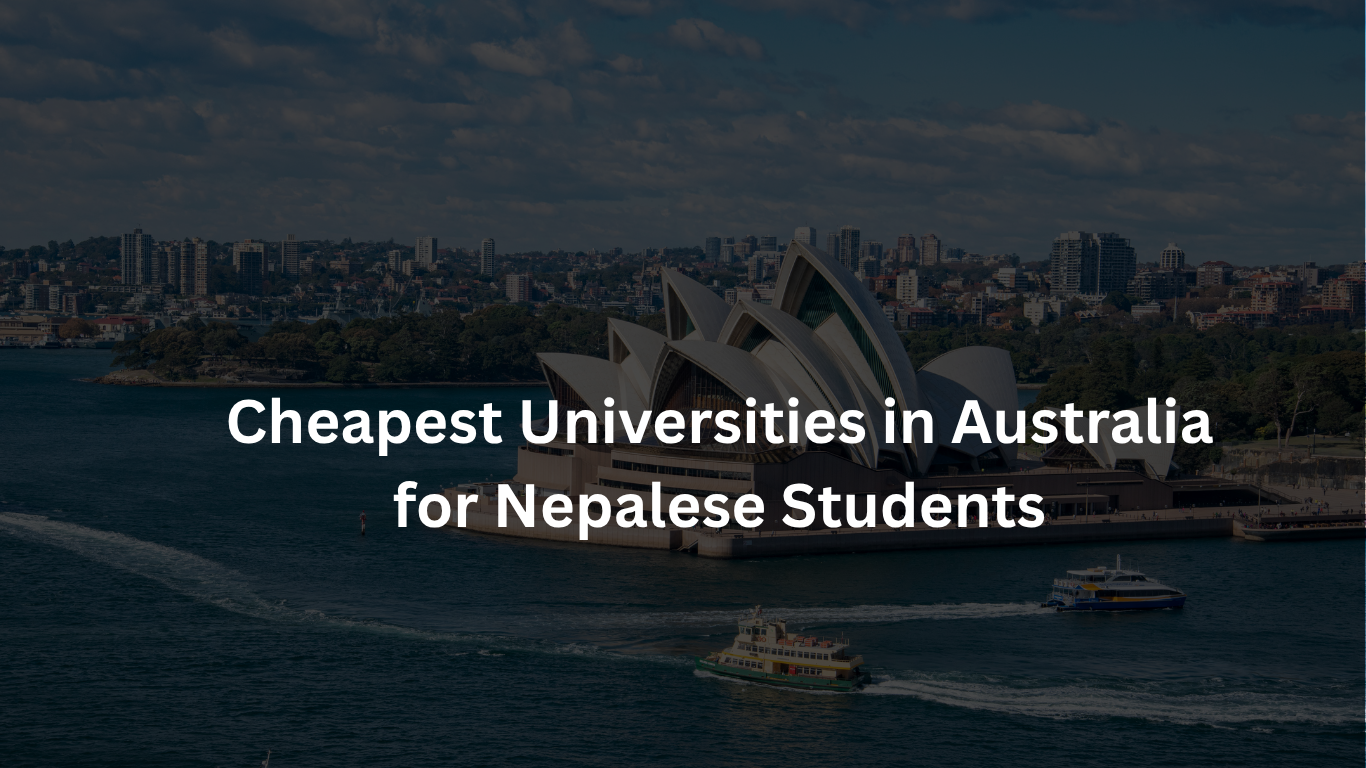Post-Study Work Visa in Australia: Best Guide 2025
Are you dreaming of continuing your journey in Australia after graduation? You’re not alone. Thousands of international students choose Australia each year not only for its world-class education but also for the golden opportunity it offers post-graduation—the Post-Study Work Visa. This comprehensive guide is tailored to help you understand every facet of this visa in 2025, from eligibility and application steps to making the most of your time down under. So, buckle up—whether you’ve just tossed your cap in the air or are planning your Aussie study adventure, this guide is your roadmap to success.
Understanding the Post-Study Work Visa (PSW)
What is a Post-Study Work Visa?
The Post-Study Work Visa, officially known as the Temporary Graduate Visa (subclass 485), is a visa option for international students who have recently graduated from an Australian educational institution. It allows you to live, study, and work in Australia temporarily after completing your studies. Think of it as your bridge from academic life to a professional career in one of the world’s most vibrant job markets.
This visa is part of the broader Temporary Graduate Visa category and aims to retain skilled graduates, helping them gain valuable work experience while contributing to the Australian economy. It’s also an excellent stepping stone for those eyeing permanent residency.
Types of Temporary Graduate Visas (Subclass 485)
There are two main streams under this visa:
- Post-Study Work Stream:
- For international students who have completed a higher education degree (bachelor’s, master’s, or doctorate) from an Australian institution.
- Offers between 2 to 4 years of stay, depending on your qualification.
- Must apply within 6 months of your student visa expiry.
- For international students who have completed a higher education degree (bachelor’s, master’s, or doctorate) from an Australian institution.
- Graduate Work Stream:
- Designed for students with qualifications that relate to occupations in demand (as per Australia’s Skilled Occupation List).
- Valid for up to 18 months (extended to 2 years in some cases due to COVID-19 adjustments).
- Designed for students with qualifications that relate to occupations in demand (as per Australia’s Skilled Occupation List).
Eligibility Criteria for the PSW Visa
Basic Requirements for International Graduates
To apply for the PSW visa, you must meet the following criteria:
- Be under 50 years old.
- Hold a valid student visa in the last 6 months.
- Possess a recent qualification from a CRICOS-registered course.
- Prove competent English skills (usually via IELTS, TOEFL, or PTE).
- Provide evidence of adequate health insurance.
- Meet character and health requirements (including police checks).
Recognized Institutions and Course Criteria
Not all courses make you eligible. Your degree must be:
- From a CRICOS-registered institution.
- A minimum of 2 academic years (92 weeks) in duration.
- Completed in no less than 16 calendar months.
Courses like bachelor’s, master’s by coursework or research, and PhDs generally meet the requirements. However, diplomas and certificates usually don’t qualify under the Post-Study Work stream, unless you’re applying under the Graduate Work stream.
Application Process: Step-by-Step Guide
Required Documents and Fees
Here’s a checklist of documents you’ll need:
- Passport and identity documents.
- Academic transcripts and completion letter.
- English proficiency test results.
- Health insurance (Overseas Visitor Health Cover – OVHC).
- Australian Federal Police (AFP) clearance.
- Form 80 (character assessment) and any other required forms.
Visa Fee for 2025: Approx. AUD $1,895 for the main applicant. There are additional fees for dependents.
Timeline and Visa Processing Duration
You should apply within 6 months of completing your course. Processing times vary:
- Post-Study Work Stream: Usually 3 to 4 months.
- Graduate Work Stream: 4 to 6 months.
To avoid delays:
- Ensure all documents are accurate and complete.
- Submit health exams and police clearances early.
Duration and Conditions of the Visa
How Long Can You Stay?
Depending on your qualification level:
- Bachelor’s Degree – 2 years
- Master’s Degree (coursework) – 2 years
- Master’s Degree (research) – 3 years
- Doctoral Degree – 4 years
From 2023 onwards, extra 2 years are granted for select degrees in demand (e.g., engineering, IT, nursing), meaning a master’s by coursework graduate in these fields could get 4 years.
Work Rights and Limitations
There are no work limitations on this visa. You can:
- Work full-time.
- Start your own business.
- Travel freely in and out of Australia.
However, your visa is not extendable. If you want to stay longer, you’ll need to apply for another type of visa, such as a Skilled Visa or Employer-Sponsored Visa.
Benefits of the Post-Study Work Visa
Work Opportunities in Australia
Landing a job in Australia post-graduation isn’t just possible—it’s often encouraged. With a Post-Study Work Visa (PSW), international graduates are granted full working rights, opening doors to professional roles across a wide range of industries. Australia’s booming sectors such as healthcare, information technology, engineering, and education are particularly favorable for skilled graduates.
Many employers view the PSW visa as a trial period, offering jobs that can later lead to sponsorship for permanent residency. That’s why choosing to remain and work in Australia after graduation can be a strategic move for long-term settlement. Popular job portals like SEEK, Indeed Australia, and LinkedIn often list graduate jobs specifically tailored for PSW visa holders.
Gaining Australian Work Experience
Having local experience is key. Australian employers highly value candidates who understand the local work culture and have adapted to the business environment. A PSW visa allows you to:
- Gain on-the-ground experience in your field.
- Enhance your resume with Australian companies.
- Build references and networks that can help secure PR or future jobs.
Many universities also provide career services even after graduation, offering alumni support with resume building, job fairs, and internships.
Pathways to Permanent Residency (PR)
Skilled Migration Pathway
One of the major advantages of the PSW visa is that it gives you time to become eligible for permanent residency through skilled migration. Here’s how:
- Skill Assessment: Gain sufficient work experience to pass a skill assessment in your occupation.
- Points Test: Accumulate enough points based on age, qualifications, work experience, English proficiency, and more.
- EOI (Expression of Interest): Submit your EOI through SkillSelect and wait for an invitation to apply.
Popular PR visas include:
- Subclass 189 (Skilled Independent Visa)
- Subclass 190 (Skilled Nominated Visa)
- Subclass 491 (Skilled Work Regional Visa)
Graduates with in-demand qualifications (especially in STEM and healthcare) often find faster pathways to PR.
Employer-Sponsored PR Options
If you land a job with a company willing to sponsor you, there are two main routes:
- Temporary Skill Shortage Visa (Subclass 482): This visa allows companies to sponsor skilled workers.
- Employer Nomination Scheme (Subclass 186): A direct PR pathway for those who have worked with their employer for at least 3 years.
Employer sponsorship is a practical route, especially for those who secure roles in industries facing labor shortages.
Regional Area Benefits
Extended Visa Duration in Regional Areas
Australia encourages migration to regional areas through various incentives. If you study and live in designated regional areas, you can receive:
- Extended PSW visa durations (up to 5 years).
- Additional points when applying for PR.
- Priority visa processing for regional applicants.
Top regional cities include Adelaide, Gold Coast, Hobart, and Canberra. These locations offer not only lifestyle perks but also competitive job markets for graduates.
High Demand Occupations in Regional Australia
Working in regional areas could also mean higher chances of PR, especially in occupations that are critical to these communities. Some in-demand roles include:
- Registered Nurses
- ICT Professionals
- Engineers (Civil, Mechanical, Electrical)
- Teachers and Childcare Workers
- Tradespersons
Graduates working in regional zones may also apply under the Subclass 491 visa, which offers a pathway to PR after three years.
Changes and Updates in 2025
New Policies Affecting International Graduates
In 2025, the Australian government introduced several updates aimed at attracting and retaining global talent:
- Streamlined PSW visa processing for STEM and healthcare graduates.
- Visa extensions of up to 6 years for graduates in critical industries.
- English language requirement reforms, making it easier for certain nationalities.
- Increased collaboration with industry partners to align graduate skills with job market demands.
These changes reflect Australia’s growing commitment to being a top destination for global education and talent retention.
Trends in Australian Immigration for Students
Current trends suggest a pivot towards skilled migration, with a focus on:
- Targeted migration in tech and health sectors.
- Policies favoring regional migration.
- Flexibility in work rights for international students.
- Partnerships between universities and employers to bridge skills gaps.
Staying informed about immigration policy shifts is crucial for any graduate planning a long-term future in Australia.
Mistakes to Avoid During Your Visa Application
Common Errors and How to Fix Them
Applying for a Post-Study Work Visa might seem straightforward, but even small mistakes can delay or derail your application. Here are the most common missteps students make—and how you can avoid them:
- Incorrect or Missing Documents
One of the biggest causes of visa delays is submitting the wrong documents. For example, many applicants forget to include their final academic transcript or completion letter. These documents are crucial as they prove you’ve met the two-year study requirement. - Wrong Visa Stream Selection
Some students mistakenly apply under the Graduate Work stream instead of the Post-Study Work stream, which can lead to rejection. Double-check your eligibility and stream requirements before submitting. - Outdated English Test Scores
English test results (IELTS, TOEFL, PTE) must be current—usually within three years from the date of your visa application. Using expired scores will invalidate your submission. - Incomplete Police Clearance
The Australian Federal Police (AFP) check is mandatory. Many students either don’t apply on time or use the wrong form. Always use the correct AFP code (33) for visa purposes.
How to Fix These Issues:
- Create a document checklist.
- Review the official Home Affairs website.
- Consider consulting a registered migration agent.
Professional Help vs. DIY Applications
Deciding between applying on your own and using a migration agent? Here’s a breakdown:
DIY Application Advantages:
- Cost-effective (save on agent fees).
- Full control over your application.
But Risks Include:
- Misinterpreting requirements.
- Missing key deadlines.
- Longer processing times due to errors.
Using a Migration Agent:
- Provides expert knowledge and up-to-date advice.
- Reduces stress and increases chances of success.
- Especially helpful for complex cases or PR transitions.
Migration agents must be registered with the Office of the Migration Agents Registration Authority (OMARA). Always verify credentials before hiring.
Life After Graduation: What Next?
Finding a Job in Australia Post-Study
Landing your first job in Australia might feel intimidating, but it’s entirely achievable. Here’s how you can increase your chances:
- Start Early: Don’t wait until your visa is approved. Begin job hunting while still studying.
- Use University Resources: Many universities offer alumni career services, resume workshops, and networking events.
- Tap into Job Portals: SEEK, LinkedIn, and GradConnection are goldmines for graduate roles.
- Professional Networks: Join industry groups, attend meetups, and make use of platforms like Meetup and Eventbrite for networking opportunities.
Craft a tailored resume that highlights your Australian qualifications, soft skills, and willingness to work in regional or high-demand roles.
Building a Long-Term Career in Australia
Once you secure your first job, start thinking long-term:
- Request Feedback: Understand your strengths and areas for improvement.
- Upskill: Take short courses or certifications to boost your profile.
- Consider PR Pathways: Use your job experience to qualify for PR under the General Skilled Migration program or employer-sponsored routes.
Stability and progression in your chosen field are vital if you aim to remain in Australia beyond your PSW visa period.
Financial Planning During Your PSW Stay
Cost of Living in Different Cities
The cost of living in Australia varies by location. Here’s a rough monthly estimate for a single graduate:
| City | Rent (Shared) | Transport | Food | Total Est. Cost |
| Sydney | AUD 900 | AUD 150 | AUD 400 | AUD 1,450–1,600 |
| Melbourne | AUD 800 | AUD 140 | AUD 380 | AUD 1,320–1,450 |
| Brisbane | AUD 700 | AUD 120 | AUD 370 | AUD 1,200–1,300 |
| Adelaide | AUD 600 | AUD 100 | AUD 360 | AUD 1,050–1,200 |
| Hobart | AUD 550 | AUD 90 | AUD 350 | AUD 990–1,100 |
Big cities like Sydney and Melbourne are more expensive, but they offer more job opportunities. Regional cities may be cheaper and offer visa benefits, but jobs might be limited in niche fields.
Budgeting Tips for New Graduates
- Create a Weekly Budget: Track your spending using apps like Frollo or Pocketbook.
- Use Student Discounts: Even after graduation, many places offer discounts to recent students.
- Cook at Home: Eating out can double your food budget.
- Use Public Transport: It’s cheaper and more eco-friendly than driving.
Being financially savvy helps reduce stress and gives you the flexibility to move if better job opportunities arise in other cities or states.
Tips for Maximizing Your PSW Visa
Upskilling and Studying Further
If you want to stand out in a competitive job market or extend your stay in Australia, consider these options:
- Take Short Courses: Certifications in project management, digital marketing, cybersecurity, etc., can enhance your employability.
- Pursue Further Studies: A higher degree can qualify you for longer visa durations and better job roles.
- Stay Current: Follow job trends in your field to learn which skills are in demand.
Many TAFE institutions and universities offer flexible programs tailored to working graduates.
Networking and Professional Development
Your network is your net worth in Australia. Here’s how to build it:
- Join LinkedIn Groups in your industry.
- Attend Industry Events and conferences.
- Volunteer or take internships to make connections and gain local references.
Australia values initiative. By continuously learning and connecting, you significantly increase your chances of job offers, visa sponsorships, and ultimately, permanent residency.
Testimonials from International Graduates
Success Stories from Former Visa Holders
Hearing directly from those who’ve walked the same path can be incredibly motivating. Here are a few real-life testimonials from graduates who successfully navigated their post-study journey in Australia:
Ananya from India (Software Engineer, Melbourne)
“I arrived in Australia in 2021 to study IT at Monash University. I applied for the PSW visa right after graduation and started working as a junior developer. Within 18 months, my employer offered me sponsorship. I now hold a Subclass 186 visa and plan to apply for citizenship in a few years. The work experience and support I received here were life-changing.”
Carlos from Colombia (Nurse, Adelaide)
“Studying nursing in a regional city paid off. Not only did I get an extended PSW visa, but I also received support from the local health network to find employment quickly. I’m now applying for the Subclass 190 PR with nomination from South Australia.”
Lin from China (Marketing Professional, Sydney)
“Although I struggled initially, attending university career events and networking on LinkedIn helped me land my first marketing job. My PSW visa gave me the confidence to stay and build my career here.”
These stories are proof that with the right strategy, support, and persistence, international graduates can thrive in Australia and even make it their permanent home.
Advice for Future Applicants
Former visa holders often share a common set of tips:
- Start planning early: Know your visa options even before you graduate.
- Engage with career services: Your university can help even after you finish studying.
- Be flexible: Consider working in regional areas or in related fields to get your foot in the door.
- Stay informed: Keep up with immigration news and policy changes on official websites.
- Network, network, network: Opportunities often come from who you know, not just what you know.
Frequently Asked Questions
Top Questions About Post-Study Work Visas
1. Can I apply for the PSW visa if I studied online due to COVID-19?
Yes. Temporary measures introduced due to the pandemic allow time spent studying online to count towards the two-year requirement, as long as you were enrolled in an Australian institution.
2. What happens if my PSW visa expires and I don’t have a PR or another visa yet?
You must leave Australia or apply for another visa before your PSW visa expires. Overstaying can affect your ability to return or apply for other visas in the future.
3. Can I include family members in my PSW visa application?
Yes. You can include your spouse/partner and dependent children. They will have the same visa conditions as you.
4. Is health insurance mandatory while on a PSW visa?
Absolutely. You must maintain adequate health cover (OVHC) throughout the duration of your stay. Lack of insurance can lead to visa cancellation.
5. Do I need a job offer to apply for the PSW visa?
No. The PSW visa does not require a job offer. However, having work experience will be beneficial if you plan to apply for PR later.
Conclusion
Securing a Post-Study Work Visa in Australia is one of the most strategic moves you can make after graduation. It gives you time, space, and legal rights to transition from student life to professional success—all while enjoying one of the most beautiful and diverse countries on Earth.
By understanding the visa types, application process, eligibility requirements, and pathways to permanent residency, you place yourself in the best possible position for a future in Australia. Whether you’re pursuing a career in IT, nursing, engineering, or marketing, this visa is your stepping stone to bigger dreams.
Take advantage of the support available, stay proactive, and never underestimate the power of good planning. The post-study phase can be the most rewarding chapter of your life—make it count.
FAQs
Q1: How soon can I apply for a Post-Study Work Visa after graduation?
You must apply within 6 months of completing your course and while your student visa is still valid or within the bridging period.
Q2: Can I study while on a Post-Study Work Visa?
Yes, you can study, but it should not be your main purpose. If you plan to study full-time, consider applying for a new student visa.
Q3: How many times can I apply for a PSW visa?
You can apply for the PSW visa only once. If you pursue a higher qualification, you might qualify for a different visa or PR pathway.
Q4: What is the success rate for PSW visa applications?
The approval rate is high if all criteria are met and documents are accurate. Delays or rejections usually result from incomplete applications.
Q5: Do employers in Australia prefer PSW visa holders?
Yes, especially in industries with skill shortages. Many see it as a probationary period for future sponsorship.




